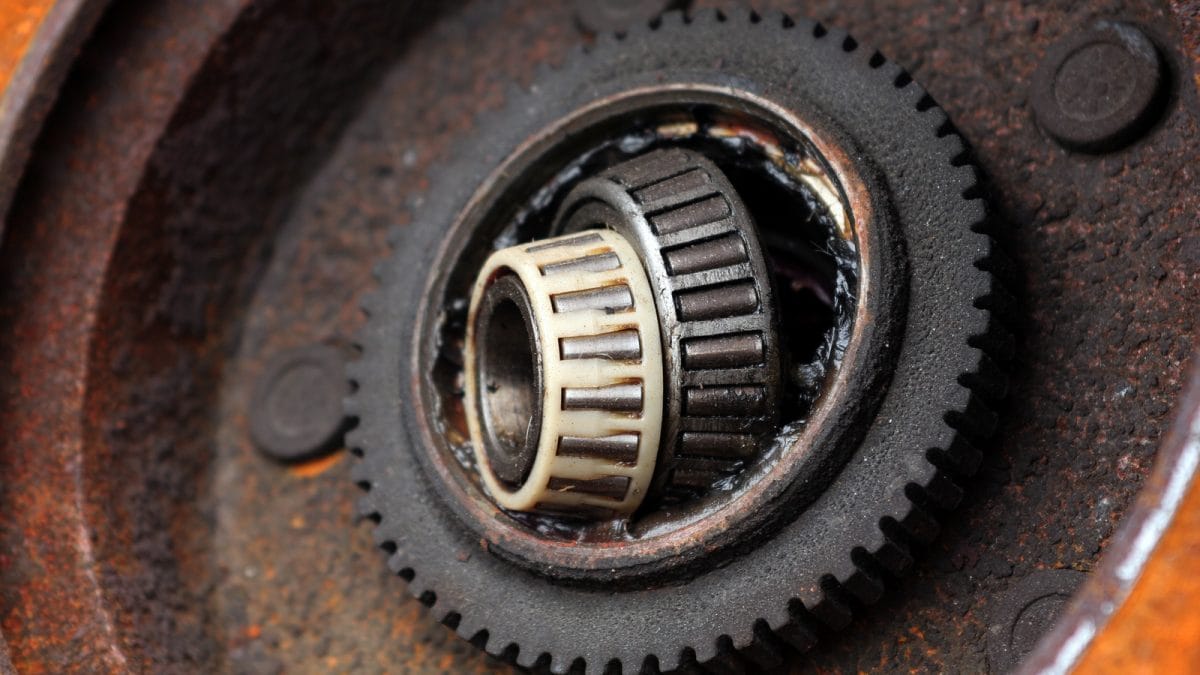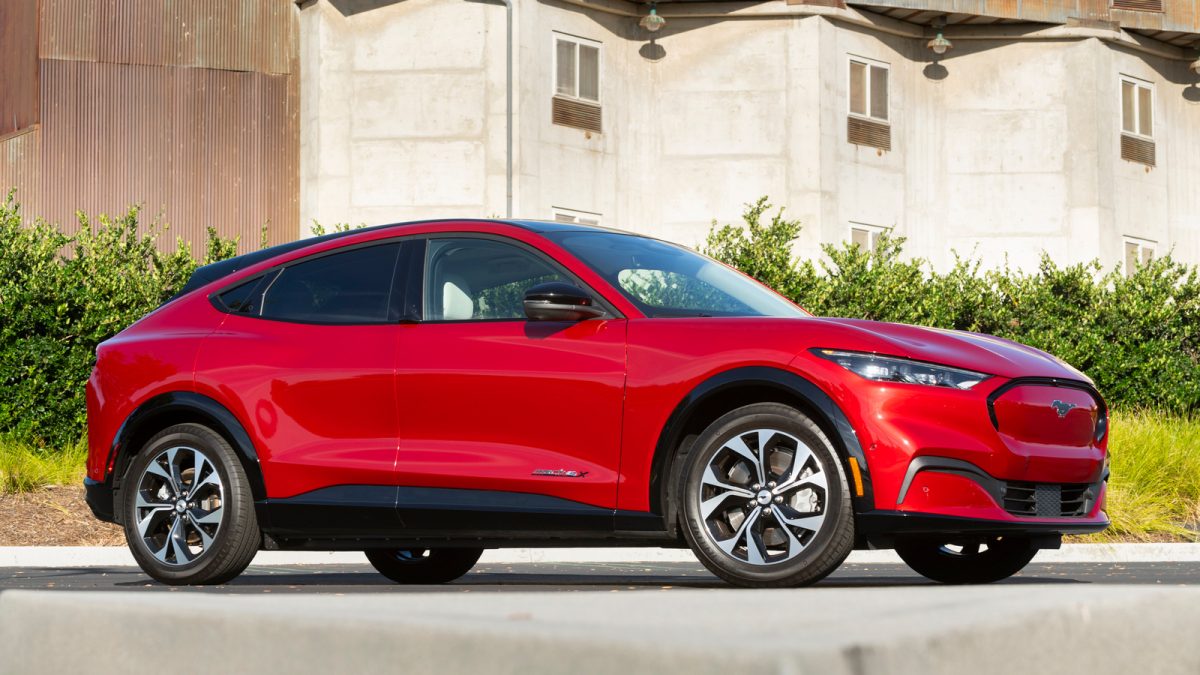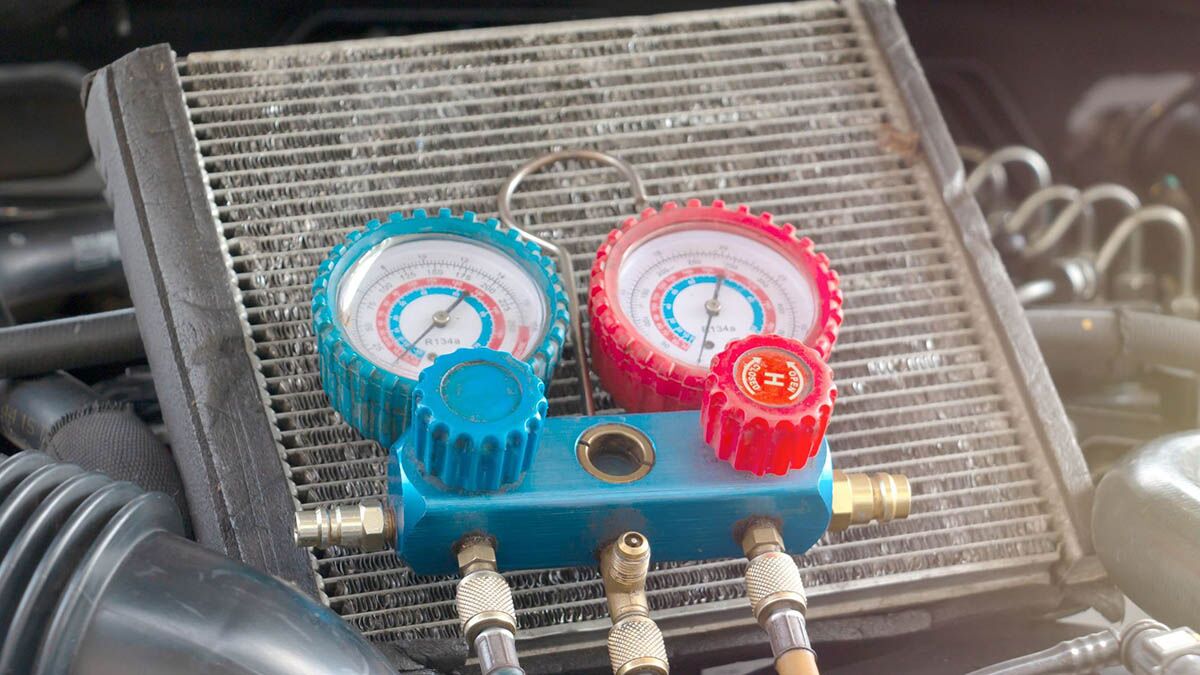Wheel Bearing Quick Facts
- Your wheel bearing might be bad if you hear unusual sounds like humming, squeaking, clicking, whirring, and more. Also, if your car wobbles or pulls to one side, you will want to get it checked.
- Bigger, wider tires can strain wheel bearings, causing accelerated wear and tear.
- If you hit a pothole, or road salt or sand gets past the seal and touches the wheel bearings, it could lead to premature failure and become a safety issue.
Imagine driving on the freeway when the left front tire and wheel suddenly break off, sending your out-of-control vehicle skidding across several lanes of 65 mph traffic. This is not an exaggeration. This is reality, and it can happen if you fail to notice the signs your car’s wheel bearings are deteriorating and need immediate repairs. Your wheel bearing might be bad if you hear unusual sounds like humming, squeaking, clicking, or whirring. Some experts say a bad wheel bearing can sound like a bird chirping. Also, if your car wobbles or pulls to one side, you need to get it checked.
If you aren’t sure if your wheel bearings are going bad, read on. We provide the signs and symptoms, the causes, how long you can drive on one, and the estimated replacement cost of a wheel bearing.
- What Are Wheel Bearings?
- Bad Wheel Bearing: Signs and Symptoms It’s Time to Replace
- Stages of Wheel Bearing Failure
- What Happens If You Drive on Bad Wheel Bearings?
- How Long Do Wheel Bearings Last?
- What Can Damage a Wheel Bearing?
- How Much Does It Cost to Replace a Wheel Bearing?
What Are Wheel Bearings?
Wheel bearings connect a car’s wheels to the axles. They allow wheels to turn with minimal friction. Also, wheel bearings have a Herculean responsibility: They are engineered to support the vehicle’s entire weight.
Though wheel bearings are low-maintenance parts, they are important safety components of a vehicle’s braking, steering, and suspension systems. The one-piece hub assembly, between the drive axle and the brake disc or drums, incorporates the hub, wheel bearings, anti-lock braking system (ABS), wheel speed sensor, and mounting flange.
The bearings are tightly packed in a grease-filled, waterproof, sealed metal ring. This housing, called a race, is located inside the hub, and each wheel has one. Most vehicles today use sealed hub bearing assemblies that contain roller bearings. While we don’t address these, older cars used tapered roller bearings, which require servicing and preload adjusting to ensure the right amount of end play or axial clearance.
Bad Wheel Bearing: Signs and Symptoms It’s Time to Replace
Your vehicle will signal that it’s time to replace a failed wheel bearing. For example, if you hear unusual sounds like humming or clicking, then your bearing might be bad. Watch out and listen for these signs, noises, and symptoms:
1. Humming Noise
The most easily identifiable and common symptom of bad wheel bearings is audible. Problems may start as a faint hum or whirring noise that’s easily missed if your car cabin isn’t well insulated from outside noise. Additionally, the noise you hear could change in intensity with slight steering adjustments. But it can be confusing. For example, the source of a humming noise can be linked to other issues, such as tires and the CV joint.
2. Squealing or Growling Sound
The typical sounds of worn-out wheel bearings are squealing and/or growling that intensify as vehicle speed increases. Try to pinpoint the location of the noise, as this will identify the location of the worn-out bearings.
3. Clicking or Popping Sound
If you hear a clicking or popping sound at lower speeds or when turning the car, that may indicate a more advanced stage of wheel bearing failure, if not a damaged CV joint. If the sound increases in frequency as the vehicle accelerates, there could be a problem with the wheel hub assembly.
4. Uneven Tire Wear
If one tire wears out faster than the others, it could be a sign that the wheel bearings are worn. It may look like scalloping on your tires. However, it also could be a sign the tire is improperly inflated (too much air pressure or not enough), the tires are improperly aligned, or the vehicle has damaged or worn suspension components.
5. Wheel Wobble
When wheel bearings go bad, it brings the potential for wheel wobble due to uneven tire wear (see previous section). Technicians can check for wheel wobble by putting the vehicle on a lift and manually checking for wheel movement. Typically, it would be impossible to shake the wheel and tire. However, if it moves, the hub assembly needs immediate attention. The tire and wheel can literally come off the vehicle at any time, at any speed, if you don’t repair your vehicle. Additionally, when wheel bearings are in an advanced stage of failure, the brake rotors may lead to a pulsating feeling or unusual brake wear.
6. ABS or Traction Control Light
If a wheel bearing starts to fail, it can trigger the wheel’s speed sensor to send signals to your car’s warning light dashboard from the ABS or traction control sensor. It can happen even if your car isn’t losing traction or you’re not braking the vehicle. See a professional for repair.
7. Vehicle Pulls to One Side
Worn bearings may cause a vehicle to pull to the left or right when brakes are applied. The direction the vehicle pulls signals where the worn bearings are located, on the left or right side of the vehicle. However, this can also signal brake rotor or brake caliper problems.
8. Steering Wheel Vibration
Bad wheel bearings can cause the steering wheel to vibrate, and those vibrations might also be felt in the seats and floorboards. The intensity increases as the vehicle speed increases and the vehicle turns to the left or right. However, the vibration could be linked to an out-of-round tire (there could be a flat spot on the tire) or a tire that is no longer balanced. Another cause is damaged or worn suspension components.
9. Steering Feels Loose
If there is excessive play in the steering, meaning the steering seems less responsive or less precise than normal, worn bearings could be causing the problem. Also, this could be a sign the vehicle needs a wheel alignment.
If you have any of the signs listed above, visit a dealer service center or auto repair shop. Use Kelley Blue Book to find a repair shop to fix your wheel bearings.
TIP: If you own an electric vehicle (EV), it brings unique considerations for wheel bearings. EVs are heavier than gas-powered cars. As a result, the weight of the vehicle can cause undue wear and tear on the wheel bearings, especially if you drive fast over speed bumps or don’t align the vehicle when needed.
Stages of Wheel Bearing Failure
When a wheel bearing starts to fail, you’ll begin to notice all the signs and symptoms, including initial wear and tear in your tires, and hearing noises you haven’t heard before in the car, such as a low humming or whirring sound.
If not addressed, as the wheel bearing failure progresses, you’ll hear the sounds and noises intensify, experience more vibration, brake issues, and wobbling wheels. That’s why detection is key.
What Happens If You Drive on Bad Wheel Bearings?
Driving with bad wheel bearings impacts the safety of a vehicle, and it could cause a serious car accident. We do not advise driving on them when they fail and recommend getting them checked out as soon as possible. Bad wheel bearings can damage things like your hub, the vehicle’s constant velocity joint (CV joint), or the automatic transmission.
“The good news is most of the time, a vehicle will let you know way before a failure ever happens,” said Gary Hardesty, Kelley Blue Book’s in-house service and maintenance expert and an A.S.E.-certified master technician. “The key is to listen to your car. Most times, a failing wheel bearing will exhibit a growling type of noise that changes with vehicle speed. The faster the car (goes), the faster the frequency of the growl.”
Hardesty cautions that if you think something is wrong, don’t wait to get it diagnosed: “The longer you wait, the more it will cost as other components may be damaged by a wheel bearing.”
How Long Do Wheel Bearings Last?
Wheel bearings are theoretically engineered to last at least 100,000 miles or more. But that’s not always the case, even if there is no maintenance schedule for replacing wheel bearings. Wheel bearings on electric vehicles (EVs) last even less than that. For example, Future Market Insights estimates that an EV’s wheel bearings may see a reduced lifespan by 15% to 20% due to heavier weight (curb weight) and torque spikes. Read on.
What Can Damage a Wheel Bearing?
Ignoring worn-out wheel bearings can damage the vehicle’s constant velocity joint (CV joint) or automatic transmission. The outer CV joint attaches the driveshaft to the wheels, and the inner CV joint connects to the transmission. Here are things that can damage a wheel bearing.
- Potholes, hitting curbs (curb bumping), and speed bumps taken at brisk speeds can damage wheel bearings, making them especially vulnerable.
- Out-of-alignment wheels affect and damage wheel bearings. It’s important to keep your vehicle’s wheels properly aligned.
- Damaged wheel bearing seals. If water, mud, road salt, or sand gets past the seal and touches the bearings, it will contaminate the grease, causing the bearings to wear down, eventually leading to failure prematurely.
- Exceeding towing and payload capacities. Filling your vehicle with excess cargo and exceeding towing or payload capacity can put undue pressure on your vehicle. As a result, it can cause wheel bearings to fail.
- Custom wheels and special tires. Head’s up: If you are planning to customize your vehicle with special tires or rims, be careful what you do. The original equipment bearings on your vehicle are engineered for specific loads. Those bigger and wider tires look cool, as do tires with lower tread walls. But they place higher loads on the wheel bearings, possibly resulting in accelerated wear. That could present a safety issue if your wheel bearings fail. It’s best to stick with an automaker’s specifications regarding replacements.
- Instant torque in an EV. In an electric vehicle, quick spikes in torque can wear out wheel bearings faster.
RELATED: Do My Tires Need to Be Replaced?
Proactive Measures You Can Take
- Catch problems early: If you hear a noise or suspect something is amiss, ask a reputable service technician to check your vehicle. They can diagnose problems by warning lights or listen during a spin wheel test for anything that seems out of the norm.
- Maintain your vehicle at regular service intervals: When you maintain your vehicle and get it checked at regular service intervals listed in your vehicle’s car manual, it can help identify problems with your wheel bearings. It also helps you maintain the value of your car. Ask your service technician to do a check at every tire rotation.
- Take preventive measures. Avoid curb strikes and control payload, keeping weight within limits. Make sure to rinse road salt, mud, and sand off the hub area of the car, where the wheel area meets the axle after things like off-roading and boat launches.
- Mind your wheel and tire upgrades. Check your owner’s manual and understand what your vehicle’s wheel and tire guidelines to ensure you don’t exceed the specifications.
- Check for safety recalls. Some vehicles have recalls that may involve wheel bearings. For example, there’s an active safety recall for the 2025 Ram 1500 for possible damaged front wheel bearing encoder rings, which could disable the pickup truck’s electronic stability control system. Other active safety recalls on vehicle wheel bearings include the 2025 Lexus NX and 2024 Toyota RAV4.
- Upgrade smart when you replace. Request ceramic hybrid or insulated wheel bearings if you drive an EV or tow regularly.
How Much Does It Cost to Replace a Wheel Bearing?
The average out-the-door wheel bearing replacement cost before taxes is about $350 per wheel, depending on vehicle make and model. Luxury cars and EVs wheel bearing replacement costs can run upwards of $700 or more.
The cost to replace one front-wheel hub assembly varies widely. Among the variables are the vehicle make and model, the garage’s labor rate, and the cost of parts.
Do note that if bearings go bad at one wheel, replacing the bearings at the other wheel on the same axle is not necessary. Don’t let someone talk you into work that is not needed.
Also, please note that car tariffs on some imported parts will increase replacement costs in the coming months. Get the price estimate for wheel bearing replacement for your make and model of car.
Editor’s Note: This article has been updated for accuracy since it was originally published. Rick Kranz contributed to this report.








